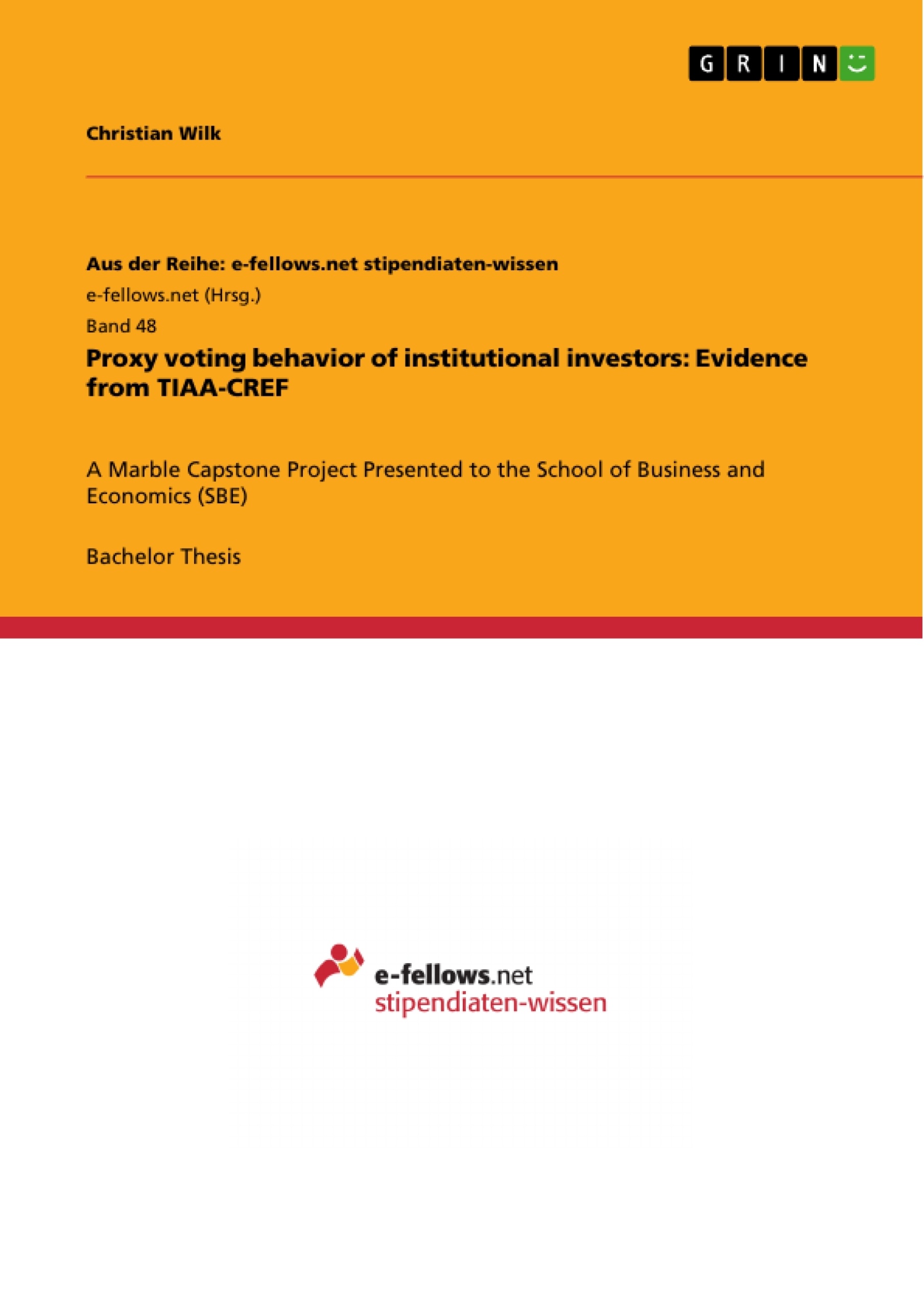This thesis analyzes the voting behavior of the Teachers Insurance and Annuity Association - College Retirement Equities Fund (TIAA-CREF). As one of the largest financial services companies in the United States, with over 426 billion Dollar in combined assets under management as of 31 of March 2010, the fund is using proxy voting as a tool to promote positive returns from their investments. This thesis relies on a database constructed out of SEC N-PX lings over a period of six month. The results indicate that TIAA-CREF only withholds directors their vote in a moderate amount of cases. In addition, the fund voted more often against management at proposals cast by shareholders concerning board structures and shareholder rights than at proposals concerning other corporate governance issues.
Inhaltsverzeichnis (Table of Contents)
- Introduction
- Related Literature
- Sample Composition
- Classification Scheme and Descriptive Analysis
- Results, Limitations and Opportunities for Further Research
Zielsetzung und Themenschwerpunkte (Objectives and Key Themes)
This thesis explores the proxy voting behavior of TIAA-CREF, one of the largest financial services companies in the United States, to understand how they use their voting power to promote positive returns on their investments. The analysis relies on a database of SEC N-PX filings over a six-month period, aiming to answer questions regarding TIAA-CREF's proxy voting strategies.
- The effectiveness of proxy voting as a tool for influencing corporate policy
- The frequency of TIAA-CREF withholding votes from directors
- The impact of shareholder activism on management's willingness to remove anti-takeover defenses
- The role of institutional investors in shaping corporate governance practices
- The relationship between proxy voting and shareholder activism
Zusammenfassung der Kapitel (Chapter Summaries)
- Introduction: This chapter provides an overview of shareholder activism and its role in corporate governance, highlighting the growing trend of institutional investors engaging in active governance strategies. It sets the stage for the analysis of TIAA-CREF's voting behavior.
- Related Literature: This chapter reviews existing research on shareholder activism, focusing on the effectiveness of shareholder proposals in influencing corporate policy. It explores the motivations behind institutional activism and the various ways investors engage in corporate governance.
- Sample Composition: This chapter delves into the methodology used for the study, describing the composition of the sample, which includes proxy votes from TIAA-CREF for a specific period. It outlines the data sources and selection criteria used in the analysis.
- Classification Scheme and Descriptive Analysis: This chapter presents the classification scheme used to analyze TIAA-CREF's proxy votes, categorizing the votes based on the issues addressed. It then provides a descriptive analysis of the voting behavior, highlighting key trends and patterns.
Schlüsselwörter (Keywords)
The primary focus of this thesis is on the proxy voting behavior of institutional investors, specifically TIAA-CREF. Key concepts include shareholder activism, corporate governance, proxy voting, institutional investors, SEC N-PX filings, and descriptive analysis. The research explores the relationship between these concepts and analyzes the effectiveness of proxy voting as a tool for influencing corporate policy and promoting positive returns on investments.
- Quote paper
- Christian Wilk (Author), 2010, Proxy voting behavior of institutional investors: Evidence from TIAA-CREF, Munich, GRIN Verlag, https://www.grin.com/document/174185



